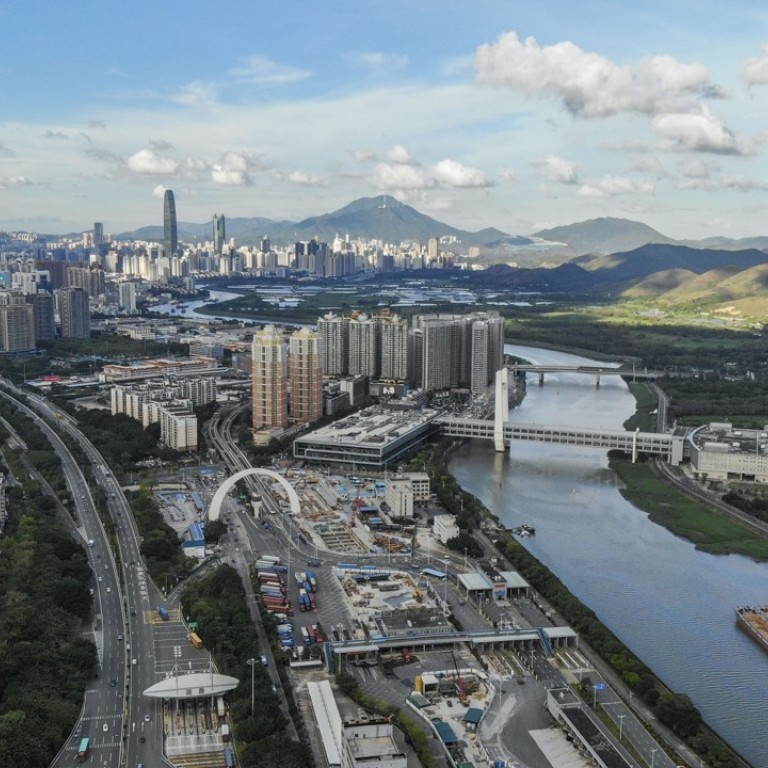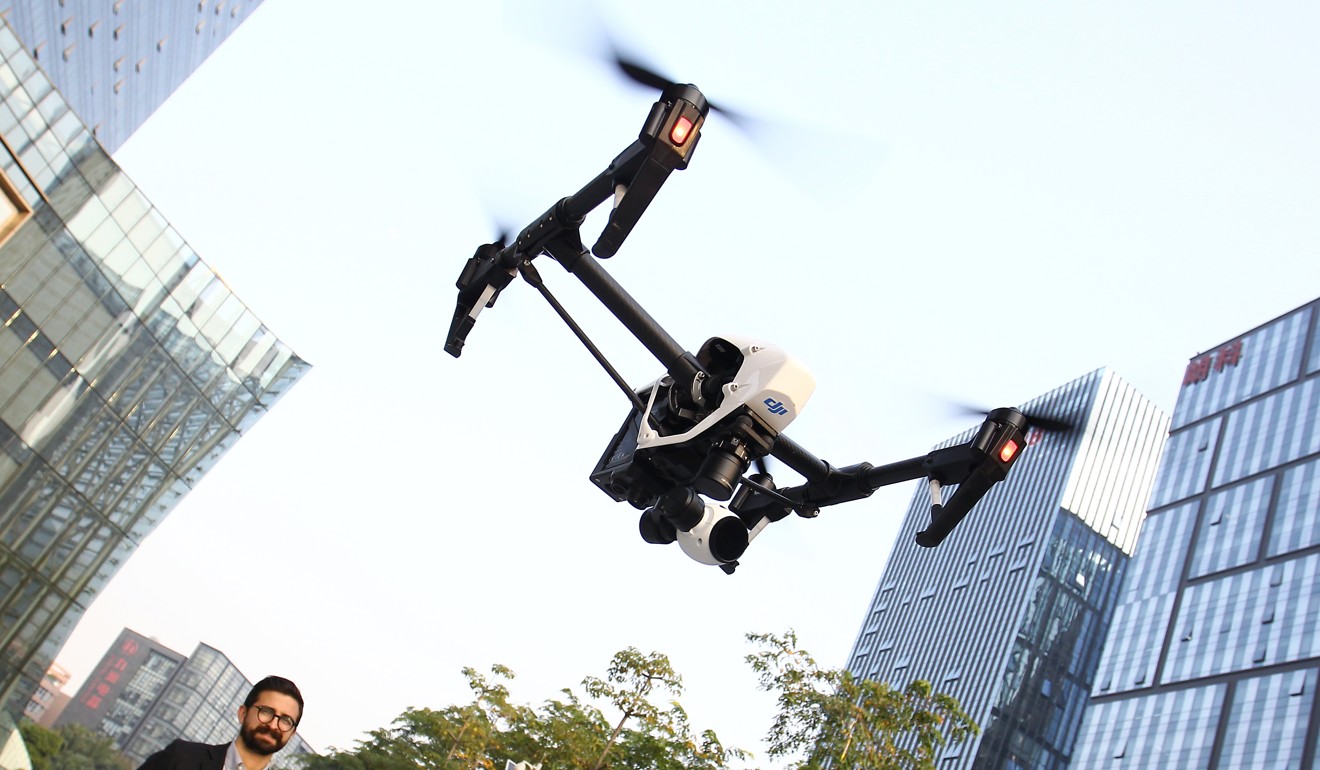
New York, Paris ... Greater Bay Area? Beijing’s big idea to transform southern China
The central government is close to revealing the details of a plan to weld nine cities, including Hong Kong and Macau, into an innovative engine of growth
On paper, it’s a dry economic integration plan to merge a string of cities in southern China.
But on the ground, the central government’s “Greater Bay Area” scheme is a part of the vernacular, carrying cachet and the promise of international prestige – at least to some of the region’s younger residents.
Twenty-something Daniel Lin, who was born and bred in the southern city of Shenzhen, said he and his friends were fans of the term, calling themselves dawanquren, or “Bay-Area-ese”.
“It makes us feel like we stand out in the world, that we are as fashionable and powerful as New Yorkers or Parisians,” Lin said.
The same goes for Guangzhou university student Vicky Liu, who says people living in the area see themselves as part of something much bigger.
“Now we think the Greater Bay Area, especially Shenzhen, is as just as international as Seoul and Tokyo but more innovative and aggressive in its economic and technological development,” Liu said.
The “Greater Bay Area” scheme is the central government’s plan to link Hong Kong and Macau with seven cities in Guangdong to turn the Pearl River Delta into a world-beating innovation hub with a US$1.5 trillion economy to rival those of San Francisco and Tokyo Bay.
It is meant to be an engine for China’s future economic growth with fairly free flows of cargo, people and even information, overcoming infrastructure bottlenecks and administrative silos.
The concept was first aired by Premier Li Keqiang last year and now, after some delays, Beijing is set to release its master plan in the coming weeks, revealing the policies that will drive the integration, high-level sources told the South China Morning Post.
SOUTHERN PROMISE
Southern China has already been transformed over the last few decades, metamorphosing from a largely rural region in the early 1980s into an increasingly hi-tech manufacturing hub today.
The change was propelled in large part by funds from Hong Kong and Macau and sustained until the early 2000s by cheap labour and land.
In 1997, when Hong Kong was handed over to China, the former British colony’s economic output was equivalent to nearly a fifth of China’s total.

Now it is rivalled by, among others, neighbouring Shenzhen, the once sleepy fishing village and former sweatshop.
Shenzhen had a 2.2 trillion yuan economy last year, roughly equivalent to Hong Kong’s HK$2.66 trillion GDP.
It is home to some China’s leading tech firms, including internet giant Tencent, drone maker DJI and telecom behemoth Huawei, and has become a must-see for visiting international dignitaries, such as German Chancellor Angela Merkel.
That kind of economic strength had laid the foundations for plans to take integration to the next level, analysts said.
Zheng Tianxiang, from Sun Yat-Sen University’s Centre for Studies of Hong Kong, Macau and the Pearl River Delta, said China’s rising economic power had given Beijing confidence to bring Hong Kong and Macau closer into its orbit.
“China has become the world’s second-biggest economy. It gives the central government the confidence and drive to have a world-class urban cluster and innovative hub,” Zheng said.
STRENGTH IN NUMBERS
In all, the Greater Bay Area encompasses 68 million people and 56,000 sq km, taking in not only Hong Kong, Macau, Guangzhou and Shenzhen but also Zhuhai, Foshan, Zhongshan, Dongguan, Huizhou, Jiangmen and Zhaoqing.
Together, those cities had a GDP of over 10 trillion yuan (US$1.56 trillion) last year, making it the fifth-biggest economy in Asia, and their combined container throughput topped the world at about 4.5 times that of the New York Bay, San Francisco Bay and Tokyo Bay combined. The area is expected to see a threefold increase in GDP by 2030, reaching some US$4.6 trillion to take the top spot among all bay areas in the world.
But the cities are expected to contribute more than economic heft.
Guo Wanda, vice-president of the Shenzhen-based think tank the China Development Institute, said each centre had its own role to play in the scheme and broader national reform.
“Each city in the Greater Bay Area – like Hong Kong, Shenzhen, Guangzhou and Dongguan – has its own advantage,” Guo said.
He said Guangzhou was home to many research institutions and would focus on basic research, while Shenzhen would translate advances into products that would be manufactured in Dongguan. Hong Kong still led the pack in international finance and its legal system.
MIND THE GAPS
Southern China has gone down the integration path before, introducing a succession of plans to weld the region’s cities into more competitive clusters.
In 2004, Guangdong launched the “Pan-Pearl River Delta” regional cooperation scheme, also known as “9+2”, to speed up economic amalgamation with nine neighbouring provinces as well as Hong Kong and Macau.

Seven years later, Guangdong pursued a plan to “empty the cage and change the birds”, encouraging businesses to move labour-intensive manufacturing out of the delta, making way for service and technology-driven industries.
In 2013, the province unveiled a plan to spend 672 billion yuan on transport, industrial zones and new cities and towns in less-developed areas to drive growth as rising costs and falling orders ate into revenue from exports.
The schemes were the pet projects of the then provincial Communist Party bosses and faded from view with each new administration.
This time the direction is from Beijing.
Zheng and Guo said that when the Greater Bay Area master plan was finally released it must be a great leap forward to once and for all enable the flow of people, logistics, capital and information across the delta, overcoming the persistent challenges preventing the administrations of Hong Kong, Macau and Guangdong from merging their economies, cultures, politics and legal systems.
“The Greater Bay Area is the most marketised and international area in China for financial and technological innovation, but it will only work as a world-class innovation hub if the various cities can meld and integrate,” Zheng said.

